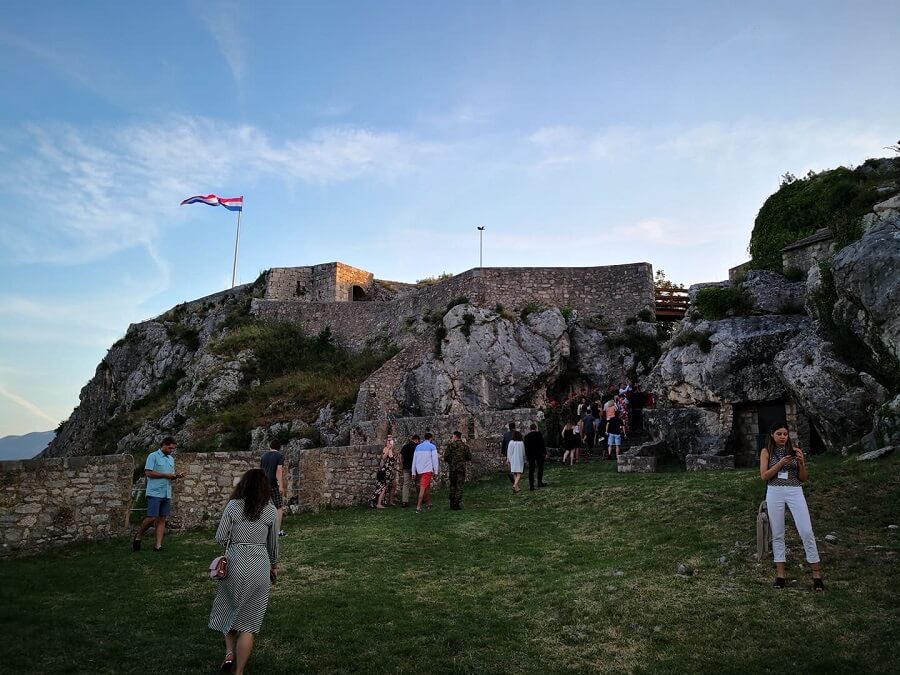Kornati National Park Finalist for 2021 Best European Filming Location
Kornati islands are among the finalists competing for the best European filming location of the year!
The European Film Commission Network (EUFCN) announced the five finalists competing for the Location Award 2021. In the fifth instalment of the annual competition, Kornati National Park made the cut as one of the filming locations for the award-winning Croatian film Murina.
Each year, all EUFCN member film commissions have a chance to nominate one location from a film or a TV series filmed in their country; the list of submissions is then reviewed by the Location Award Jury who select the top five locations to compete for the title. EUFCN state that the jury looks for locations that have a significant role in the story and innovative use in the audiovisual product.
Here’s a full list of this year’s finalists:
Berlin, Germany: The Queen’s Gambit
Cahir Castle, Ireland: The Green Knight
Malaga, Spain: The Crown (Season 4)
Stadlandet, Norway: Dune
Kornati National Park, Croatia: Murina
 EUFCN - European Film Commissions Network
EUFCN - European Film Commissions Network
Voting is open to the general public - you can cast your vote until January 31st, 2022 at the EUFCN Location Award page. If you need an incentive, let it be known that one lucky voter will be randomly selected and awarded a trip to the winning location!
Murina was directed by Antoneta Alamat Kusijanović and stars Gracija Filipović, Leon Lučev, Danica Ćurčić and Cliff Curtis.
The Dubrovnik-born director’s first feature film won quite a few international accolades this year, most notably the prestigious Camera d’or award at the Cannes Film Festival in July. Murina had its Croatian debut at the Pula Film Festival where it won three awards: the Golden Arena for Best Supporting Actress (Danica Ćurčić), the Breza Award for Best Debutant (Antoneta Alamat Kusijanović), and the Golden Gate of Pula Audience Award for best film in the Croatian programme.
Apart from Kornati, the filming of Murina also took place on Hvar and Koločep island.
For everything you need to know about filming in Croatia, follow TCN's dedicated page.
Kornati Tragedy 14th Anniversary: Remembering 12 Lives, Honoring 13 Heroes
August 30, 2021 - On the Kornati tragedy 14th anniversary, Croatia remembers the firefighters that fell victim to a blaze on the island of Kornati on August 30, 2007. Of the 13 firefighters at the scene, 12 died on the spot or in hospital, and only one survived - Frane Lučić from Tisno. The event is considered the worst disaster since the Croatian War of Independence with officials dying on duty.
“An unprecedented firefighting tragedy happened on the Kornati Islands in Dalmatia, Croatia on August 30, 2007. This is the worst disaster since the Croatian War of Independence, with officials dying on duty. The underbrush on the barren, uninhabited side of the island caught fire, and firefighters were called to help. As the summer is the season of fires, Croatia had lent a firefighting plane to Greece to help fight their fires. So there was an urgent need for another means of transportation, and a military helicopter was used to transport firefighters and a water container. The MI-8 MTV-1 helicopter disembarked the water container at one spot, the firefighters at another, and left. That military helicopter has remained the issue of later speculations. Namely, in “Novi tjednik,” a Dalmatian daily, a shocking article by journalist Jelena Devcic was published entitled “Proofs buried, cleaning fluid on the ground.” It has been speculated that the helicopter hit a rock during maneuvering, and besides a blown tire, the tank was damaged with oil and petrol leaking because some oily stains were found on the rocks. The firefighters were soon surrounded by burning underbrush, and they burned.
According to the official expertise that was done later, it was concluded that a burn-out of an inhomogeneous gas mixture occurred by burning vegetation accompanied by strong winds. A similar rare phenomenon was described in Australia in 2003 near Canberra and Corsica in 2000 near the place Palasca. Therefore, besides our leading forensic experts, the leading world firefighting experts were invited to the Republic of Croatia who came to reconstruct the disaster, to find out the dynamics and kinetics of fire, its speed and direction it spread, height and position of the flame, and to assess the freed thermal energy,” reads the official report from Hrvoje Lalić, Professor, Specialist in Occupational and Environmental Medicine at Rijeka Medical School.
Six firefighters from the Sibenik fire department were killed - Dino Klarić, Ivica Crvelin, Ivan Marinović, Marko Stančić, Gabrijel Skočić, and Hrvoje Strikoman, and seven more survived with severe body burns. Five were transferred for treatment in Zagreb (Tomislav Crvelin, Ante Crvelin, Josip Lučić, Karlo Ševerdija, and Marinko Knežević) and soon died from the severity of their burns. The only surviving firefighter, Frane Lučić, was discharged for home treatment after recovering at Split Clinical Hospital.
County Fire Commander Dražen Slavica was the only one charged with the Kornati tragedy, as the only potential culprit for the death of 12 of his colleagues. DORH charged the then fire commander with numerous failures in organizing the intervention, appointing minors to the fire, delaying assistance to the victims, and more. At the end of April 2018, he was finally acquitted of all guilt in a repeated trial.
An eruptive fire is an official explanation initially presented to the public as the cause of the accident.
“It has been shown that the temperature at the fire site was over 1200°C, and it explained the cause of such a sporadic fire. The cause was the burn-out of an inhomogeneous gas mixture due to the burning of vegetation, carried by a strong wind that swept over the firemen.
The idea that the kerosene from the army helicopter caught fire was discarded as unfounded and improbable. Instead, it was the seasonal receptionist at the Kornati National Park whose cigarette butt started the chain of unfortunate events.
The last question refers to the events after the disaster – why did it take hours to transport the casualties from the island to the mainland, late at night by a naval vessel? Only one fireman survived. Because he developed PTSD and was undergoing treatment, he could not comprehend the whole event but is aware of his colleagues´ death. He was transferred to Bratislava, Slovakia, to have his skin grafted. He wishes to return to everyday life but has a long rehabilitation ahead of him. In principle, most patients return to work after burn injuries. Of course, it depends on the type and severity of the injury, which often requires a long and intensive hospital therapy and other out-of-hospital treatments. Major burns consequentially lead to the failure of organs, sepsis, and shock. The survivors often get damaged muscle-skeletal and circulation systems, but also mental disorders. Deformities, loss of body parts (like the Kornati survivor with a handicapped finger) may trigger serious psychological problems. Social support, the role of family and partners is of great importance. It is not only the direct victims that are mentally scarred. Three weeks after the Kornati tragedy, the volunteer fire company secretary hanged himself. He was a high-school teacher and knew the young victims who used to be his students. The volunteer fire company captain needed psychiatric treatment,” Hrvoje Lalić continued in the official report.
It took ten years for the state to settle with Frane Lučić. Finally, it was decided that the compensation would be 1.75 million kuna, that he would be paid two monthly rents - 1500 kuna for medical preparations and food and 4500 kuna for help and care. He was also reimbursed for 617 thousand kuna in court costs, all of which, with default interest, amounted to around 5 million kuna as of 2009.
In September 2009, the government commissioned the Ministries of Culture, Sea, Transport and Infrastructure, Construction and Physical Planning to announce a call for proposals for the Kornati tragedy memorial's conceptual design to be completed by the anniversary in 2010. On January 29, 2010, it was announced that Zadar architect Nikola Bašić would design the memorial. The plan was to have crosses made of stones as found on the island, which would fit into the landscape. The memorial crosses on the Kornati were completed on May 23, 2010.
A commemoration and prayer for the lives lost are expected at the Kornati memorial park today, with a wreath-laying in the local communities of Šibenik, Vodice, and Tisno. In addition, the memory of the victims will be expressed by all fire brigades, with the sound of a siren at exactly 15:25. They will pay tribute by lighting a candle in remembrance.
The 14th anniversary will be held internally without guests, unfortunately, due to the COVID-19 situation. Only members of DVD Tisno and the families of the killed firefighters are participating, DVD Tisno announced on its Facebook.
For more on the news in Croatia, follow TCN's dedicated page.
PHOTOS: It's True! Beyonce and Jay Z in Croatia on Holiday
Total Croatia News broke the story last Friday. And now it's finally been confirmed - it's true, Beyonce and Jay Z in Croatia
News travels fast in Croatia. Nowhere does it travel quicker than on the ever-reliable News pages of Total Croatia News. Unless, of course, you count Croatian gossip.
TCN journalist extraordinaire Iva Tatić was relaxing on the island of Korčula, playing with her dog, when last week she heard an eyebrow-raising piece of gossip through the open window. “Beyonce and Jay Z in Croatia!”
Iva Tatić's dog, one of the first to hear about Beyonce and Jay Z in Croatia
Ever the professional, Iva leaned out of the balcony to ask a neighbour to confirm the rumour. “That's what they're saying” replied the neighbour, above a small street filled with laughter. The cause of the chuckles? Not only are Beyonce and Jay Z in Croatia, but they've also asked for the entire islet of Vrnik to be evacuated so they can enjoy a private visit. “Hmm, difficult request,” thought Iva. Vrnik is an inhabited island. People live there throughout the year. There are probably around 100 people there right now.
Much to the disappointment of her dog, Iva's journalistic instincts took over. She sat down at the computer and set about trying to corroborate the rumour so that she could break the news. At her time of writing, she was unable to do so. There was simply nothing in any other media confirming Beyonce and Jay Z in Croatia.
How Iva Tatić broke the story about Beyonce and Jay Z in Croatia last Friday. Her's was the first story to announce the pop star's arrival. It has since been confirmed that the celebrity couple are indeed aboard the pictured yacht, Lana. Iva Tatić took this photo of the yacht from the shores of the island of Korčula, where she likes to spend much of her summer
But, sometimes a journalist's instinct is all they need. Iva confirmed that the yacht Lana had been seen in the surroundings of the Korčula archipelago. She went to the shoreline and it was there! From a distance, she managed to grab a photo. At 107 meters in length and capable of accommodating 12 guests and 31 crew, this is no ordinary yacht. Some special visitors were definitely holidaying here.
Knowing that Beyonce and Jay Z had been here nine years ago, on Hvar, and two years prior to that had been in Dubrovnik, Iva went with gut instincts and published the story, being careful to mention it was uncorroborated. Her article was the first to break the news of a visit that is now 100% confirmed. It's true, Beyonce and Jay Z in Croatia.
Beyonce and Jay Z in Croatia, pictured on Instagram
The yacht Lana was spotted further up the coast on Saturday, around the Kornati archipelago. Then, in the afternoon of the same day, tourists visiting the island of Žut were finally able to corroborate Iva's story. They managed to grab pictures of Beyonce and Jay Z in Croatia. They were dining in an otherwise deserted restaurant, Fešta on the island. The visit coincides with Beyonce's 39th birthday.
Iva's story was confirmed by Croatian portal Zadarski.hr one day after Iva published when they were able to show photos of the couple dining on the island of Žut
This being visit number three for Beyonce and Jay Z in Croatia, we wouldn't count out a return visit next year for her 40th. The couple clearly love coming to Croatia. If they do come, be sure to look out for Total Croatia News again breaking the story. Since the writing of her article, Iva Tatić and her dog have been taking their cuddling sessions much closer to Iva's open window.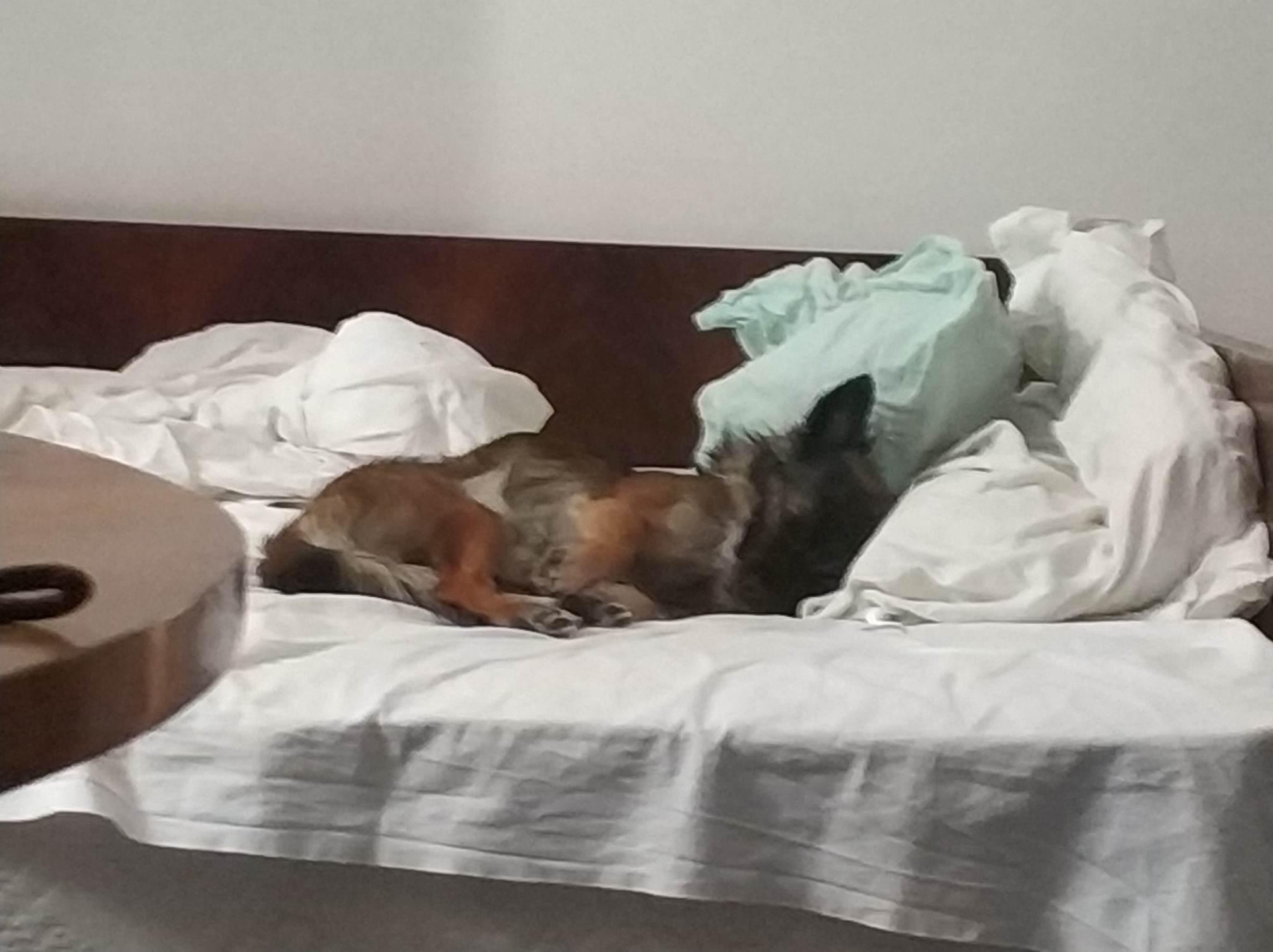
Iva Tatić's dog "Beyonce and Jay Z in Croatia? I don't care! Where did my cuddles go?"
For the latest travel info, bookmark our main travel info article, which is updated daily.
Read the Croatian Travel Update in your language - now available in 24 languages
Croatia Remembers the Kornati Tragedy 13 Years Later
August 30, 2020 - Croatia remembers the Kornati tragedy, which occurred on August 30, 2007, when a group of firefighters fell victim to a blaze on the island of Kornati. Of the 13 firefighters at the scene, 12 died on the spot or in hospital, and only one survived - Frane Lučić from Tisno. The event is considered the worst disaster since the Croatian War of Independence, with officials dying on duty.
“An unprecedented firefighting tragedy happened on the Kornati Islands in Dalmatia, Croatia on August 30, 2007. This is the worst disaster since the Croatian War of Independence, with officials dying on duty. The underbrush on the barren, uninhabited side of the island caught fire, and firefighters were called to help. As the summer is the season of fires, Croatia had lent a firefighting plane to Greece to help fight their fires. So there was an urgent need for another means of transportation, and a military helicopter was used to transport firefighters and a water container. The MI-8 MTV-1 helicopter disembarked the water container at one spot, the firefighters at another, and left. That military helicopter has remained the issue of later speculations. Namely, in “Novi tjednik,” a Dalmatia daily, a shocking article by journalist Jelena Devcic was published entitled “Proofs buried, cleaning fluid on the ground.” It has been speculated that the helicopter hit a rock during maneuvering, and besides a blown tire, the tank was damaged with oil and petrol leaking because some oily stains were found on the rocks. The firefighters were soon surrounded by burning underbrush, and they burned.
According to the official expertise that was done later, it was concluded that a burn-out of an inhomogeneous gas mixture occurred by burning vegetation accompanied by strong winds. A similar rare phenomenon was described in Australia in 2003 near Canberra and Corsica in 2000 near the place Palasca. Besides our leading forensic experts, the leading world firefighting experts were invited to the Republic of Croatia who came to reconstruct the disaster, to find out the dynamics and kinetics of fire, its speed and direction it spread, height and position of the flame and to assess the freed thermal energy,” reads the official report from Hrvoje Lalić, Professor, Specialist in Occupational and Environmental Medicine at Rijeka Medical School.
Six firefighters from the Sibenik fire department were killed - Dino Klarić, Ivica Crvelin, Ivan Marinović, Marko Stančić, Gabrijel Skočić, and Hrvoje Strikoman, and seven more survived with severe body burns. Five were transferred for treatment in Zagreb (Tomislav Crvelin, Ante Crvelin, Josip Lučić, Karlo Ševerdija, and Marinko Knežević) and soon died from the severity of their burns. The only surviving firefighter, Frane Lučić, was discharged for home treatment after recovering at Split Clinical Hospital.
County Fire Commander Dražen Slavica was the only one charged with the Kornati tragedy, as the only potential culprit for the death of 12 of his colleague. DORH charged the then fire commander with numerous failures in organizing the intervention, appointing minors to the fire, delaying assistance to the victims, and more. At the end of April 2018, he was finally acquitted of all guilt in a repeated trial.
An eruptive fire is an official explanation initially presented to the public as the cause of the accident.
“It has been shown that the temperature at the fire site was over 1200°C, and it explained the cause of such a sporadic fire. The cause was the burn-out of an inhomogeneous gas mixture due to the burning of vegetation, carried by a strong wind that swept over the firemen.
The idea that the kerosene from the army helicopter caught fire was discarded as unfounded and improbable. It was the seasonal receptionist at the Kornati National Park, whose cigarette butt started the chain of unfortunate events.
The last question refers to the events after the disaster – why did it take hours to transport the casualties from the island to the mainland, late at night by a naval vessel? Only one fireman survived. Because he developed PTSD and was undergoing treatment, he could not comprehend the whole event, but is aware of his colleagues´ death. He was transferred to Bratislava, Slovakia, to have his skin grafted. He wishes to return to everyday life but has a long rehabilitation ahead of him. In principle, most patients return to work after burn injuries. Of course, it depends on the type and severity of the injury, which often requires a long and intensive hospital therapy and other out-of-hospital treatments. Major burns consequentially lead to the failure of organs, sepsis, and shock. The survivors often get damaged muscle-skeletal and circulation systems, but also mental disorders. Deformities, loss of body parts (like the Kornati survivor with a handicap finger), may trigger serious psychological problems. Social support, the role of family and partners is of great importance. It is not only the direct victims that are mentally scarred. Three weeks after the Kornati tragedy, the volunteer fire company secretary hanged himself. He was a high-school teacher and knew the young victims who used to be his students. The volunteer fire company captain needed psychiatric treatment,” Hrvoje Lalić continued in the official report.
It took ten years for the state to settle with Frane Lučić. It was decided that the compensation would be 1.75 million kuna, that he would be paid two monthly rents - 1500 kuna for medical preparations and food and 4500 kuna for help and care. He was also reimbursed for 617 thousand kuna in court costs, all of which, with default interest, amounted to around 5 million kuna as of 2009.
In September 2009, the government commissioned the Ministries of Culture, Sea, Transport and Infrastructure, Construction and Physical Planning to announce a call for proposals for the Kornati tragedy memorial's conceptual design, so that it would be completed by the anniversary in 2010. On January 29, 2010, it was announced that Zadar architect Nikola Bašić would design the memorial. The plan was to have crosses made of stones as found on the island, which would fit into the landscape. The memorial crosses on Kornati were completed on May 23, 2010.
Due to the announced strong southern winds, the commemoration for firefighters will not be held on Sunday, August 30, but on Tuesday, September 1.
The commemoration will begin with a service of words for the fallen firefighters in the Chapel of St. Florian at 10 am, after which the envoys of the President of the Republic of Croatia, the Croatian Parliament, and the Government will lay a wreath.
Representatives of Sibenik-Knin County, the cities of Sibenik and Vodice, the municipalities of Tisno and Murter-Kornati, the Croatian Fire Brigade, the Sibenik-Knin County Fire Brigade and the Kornati National Park will light candles.
Today, we remember Dino Klarić, Ivica Crvelin, Ivan Marinović, Marko Stančić, Gabrijel Skočić, Hrvoje Strikoman, Ante Crvelin, Tomislav Crvelin, Josip Lučić, Karlo Ševerdija, Marinko Knežević and Ante Juričev Mikulin. Twelve lives gone too soon. May they never be forgotten.
You can read more about the Kornati tragedy here.
For the latest travel info, bookmark our main travel info article, which is updated daily.
Read the Croatian Travel Update in your language - now available in 24 languages
Join the Total Croatia Travel INFO Viber community.
VIDEO: Drone Footage Shows Cycling On Ugljan Island, A Blissful Paradise
August 4, 2020 - Get a bird’s eye view of Zadar’s closest facing neighbour with this new drone footage of cycling on Ugljan island
Even in the height of summer, Croatia can offer total escape. The crowds and city streets have been all but forgotten by Andrej Šimunaj and his friends, who are currently enjoying cycling on Ugljan island. A new video they shot using a drone offers an incredible perspective of the peace, tranquillity and beauty of this little-discussed island.
The footage shows the visitors passing through peaceful pine forests as they journey to the vantage point of Venetian-built St. Michael’s Fort, high above the town of Preko and just of the edge of the Kornati National Park. From there, the cyclists roll downhill to a small cove named Prtljug, which holds the incredibly clear turquoise seas so beloved by visitors to the Croatian coast.
Cycling On Ugljan Island
Ecological Footprint Measured at NP Kornati and PP Lastovo
October 24, 2019 - Thanks to the DestiMED project, the Kornati National Park and the Lastovo Islands Nature Park were able to measure the ecological footprint of their tourist offer, which is now available to Croatia’s other protected areas.
Not surprisingly, food turns out to have the most impact on the ecological footprint of visitors on the protected area itself.
Namely, HRTurizam writes that at the closing ceremony of the international DestiMED project held in Rome, the latest methodology for monitoring the ecological footprint of tourists in protected areas in the Mediterranean Sea was presented, and among the areas where the method was tested were the Kornati National Park and the Lastovo Islands Nature Park.
Using the standardized tools of the world's leading eco-footprint measurement organization, Global Footprint Network, as a starting point, partners in the DestiMED project adapted the eco-footprint methodology for environmental impact assessment. Not only was the ecological footprint of each tourist who participated in the latest eco-tourism offer measured, but concrete steps were taken to manage the environmental footprint in that offer. Specific components, such as food, lodging, transportation, and recreational activities, were taken into account.
The results indicated that food and drink had the most substantial environmental impact, especially in those packages that offered large quantities of meat products.
"The methodology for monitoring the ecological footprint we developed within the DestiMED project and the first of its kind in the world has helped protected areas and tourism professionals in the Kornati National Park and the Lastovo Islands Nature Park see where their tours are great, and where there is space for improvement when it comes to the impact on the environment and nature. Moreover, new and alternative business opportunities have been identified that are pushing us towards more sustainable local development,” explains Mosor Prvan of WWF Adria, DestiMED project manager.
By making better choices and promoting the best practices in tourism and recreation, protected areas can address the environmental impact of their tourism packages developed as part of the DestiMED project, while improving the quality of services offered to tourists, concluded WWF Adria.
In the future, the free online eco-footprint calculator will make the methodology applicable to all protected areas in the Mediterranean that are ready to create and test their ecotourism packages.
You can view the online tool here.
To read more about lifestyle in Croatia, follow TCN’s dedicated page.
Research Being Carried Out at NP Kornati to Lower Amount of Rubbish
As SibenikIN writes on the 12th of October, 2019, the popular Kornati National Park (NP Kornati) is undergoing research this weekend to identify the sources of waste pollution in the area of that particular national park. Based on the results of the research, an attempt will be made to determine the proportion of waste that comes into the Kornati area carried by the sea's currents and waste generated in the area of the park itself.
The research, which has been continuing over the weekend, started back in October 2017. As stated, based on the results of the research, measures will be defined to reduce the amount of waste generated in the park area, all with the aim of preserving and protecting the extremely valuable Kornati submarine areas.
The research is being carried out in cooperation with the Society for Underwater Sports - DPS Zagreb, and is being led by Ph.D. Martina Markov.
The exceptional biodiversity of Kornati's submarine is one of the reasons why part of the Kornati archipelago was declared a national park back in 1980. To date, more than 1,300 plant and animal species have been recorded in the Kornati submarine, including 366 types of algae, 3 sea flowers, 81 sponge species, 78 sea urchin species, 17 starfish species, 71 coral species, 145 snail species, 59 shellfish species, 77 crustacean species and 188 species of fish. With each new survey, the list is enriched with yet more, newly discovered species.
The greater part of the coastal zone is inhabited by the beautiful posidonia marine flowering plants, whose habitats are primarily NATURA 2000 habitats. The submarine cliffs there are characterised by coralligen - a habitat composed of red algae. Coralligen is home for an extremely large variety of species that are suitable for reduced light conditions - such as sponges, corals, and red and brown algae.
In the wider area of the Kornati National Park, which includes the Žut-Sit group of islands and the Murter area, 147 different species of bottlenose dolphins have been recorded so far, and often sea turtles - such as loggerhead turtles - which are strictly protected animals.
Make sure to follow our dedicated lifestyle page for much more. If you're interested in both official and unofficial ways Croatia works to protect its environment, give Total Eco Croatia a follow.
Remembering Kornati Tragedy 12 Years On
August 30, 2019 - The Kornati tragedy occurred on August 30, 2007, when a group of firefighters fell victim to a blaze on the island of Kornati. Of the 13 firefighters in the group, 12 died on the spot or in hospitals, and only one survived - Frane Lučić from Tisno. The event is considered the most terrible disaster since the Croatian War of Independence, with officials dying on duty.
“An unprecedented firefighters´ tragedy happened on the Kornati Islands in Dalmatia, Croatia on August 30, 2007. This is the most terrible disaster since the Croatian War of Independence, with officials dying on duty. The underbrush on the barren, uninhabited side of the island caught fire and firefighters were called to help. As the summer is the season of fires, Croatia had lent a fire-fighting plane to Greece to help fight their fires. So there was an urgent need for another means of transportation and a military helicopter was used to transport firefighters and a water container. The helicopter MI-8 MTV-1 disembarked the water container at one spot, firefighters at another and left. That military helicopter has remained the issue of later speculations. Namely, in “Novi tjednik”, a Dalmatia daily, a shocking article by journalist Jelena Devcic was published entitled “Proofs buried, cleaning fluid on the ground”. It has been speculated that the helicopter hit a rock during maneuvering, and besides a blown tire the tank was damaged with oil and petrol leaking because some oily stains were found on the rocks. The firefighters were soon surrounded by burning underbrush and they burned out.
According to the official expertise that was done later, it was concluded that it was a burn-out of an inhomogeneous gas mixture which occurred by burning vegetation accompanied by strong winds. A similar rare phenomenon was described in Australia in 2003 near Canberra and in Corsica in 2000 near the place Palasca. Besides our leading forensic experts, the leading world firefighting experts were invited to the Republic of Croatia who came to reconstruct the disaster, to find out the dynamics and kinetics of fire, its speed and direction it spreads, height and position of the flame and to assess the freed thermal energy,” reads the official report from Hrvoje Lalić, Professor, Specialist in Occupational and Environmental Medicine at Rijeka Medical School.
Six firefighters from the Šibenik fire department were killed - Dino Klarić, Ivica Crvelin, Ivan Marinović, Marko Stančić, Gabrijel Skočić and Hrvoje Strikoman, and seven more survived with severe burns on the body - five of which were transferred for treatment in Zagreb (Tomislav Crvelin, Ante Crvelin, Josip Lučić, Karlo Ševerdija and Marinko Knežević) who soon died from the consequences of severe burns. The only surviving firefighter, Frane Lučić, was discharged for home treatment after recovering at Split Clinical Hospital.
The central celebration of the 12th anniversary of the Kornati tragedy will take place on Friday on the island of Kornati.
"We don't know the truth, and I don't think I'll live to see it, and I doubt anyone will tell it. It is very sad, after 12 years, that no one is responsible for 12 lives, it is very sad,” said Ajka Crvelin, wife and mother of the deceased firefighters, told RTL.
It took ten years for the state to finally settle with Frane Lučić, the only surviving Kornati firefighter. It was decided that the compensation would be 1.75 million kuna, that he would be paid two monthly rents - 1500 kuna for medical preparations and food and 4500 kuna for help and care. He will also be reimbursed for 617 thousand kuna in court costs, all of which, with default interest, will amount to about 5 million kuna as of 2009.
County Fire Commander Dražen Slavica was the only one charged with the Kornati tragedy, the only potential culprit for the death of 12 of his colleague. DORH charged the then fire commander with numerous failures in organizing the intervention, referring minors to the fire, delaying assistance to the victims, etc. At the end of April 2018, he was finally acquitted of all guilt in a repeated trial.
An eruptive fire is an official explanation initially presented to the public as the cause of the accident.
“It has been shown that the temperature at the fire site was over 1200°C and it explained the cause of such a sporadic fire. The cause was the burn-out of an inhomogeneous gas mixture due to the burning of vegetation which was carried by a strong wind that swept over the firemen.
The idea that the kerosene from the army helicopter caught fire was discarded as unfounded and improbable. It was the seasonal receptionist in the Kornati National Park whose cigarette butt started the chain of unfortunate events.
The last question refers to the events after the disaster – why did it take hours to transport the casualties from the island to the mainland, late at night by a naval vessel. Only one fireman survived. Because of the developed PTSD and the undergoing of treatment, he is not able to comprehend the whole event, but he is aware of his colleagues´ death. He was transplanted to Bratislava, Slovakia to have his skin cultivated. He wishes to return to everyday life but has a long rehabilitation before him. In principle, most patients return to work after burn injuries. Of course, it depends on the type and severity of the injury, which often requires a long and intensive hospital therapy as well as other out-hospital treatments. Major burns consequentially lead to the failure of organs, sepsis and shock. The survivors often get damaged muscle-skeletal and circulation systems, but also mental disorders. Deformities, loss of body parts (like the Kornati survivor with a finger handicap), may trigger serious psychological problems. Social support, the role of family and partners is of great importance. It is not only the direct victims that are mentally scarred. Three weeks after the Kornati tragedy, the volunteer fire company secretary hanged himself. He was a high-school teacher and knew the young victims who used to be his students. The captain of the volunteer fire company needed psychiatric treatment,” Hrvoje Lalić continued in the official report.
In September 2009, the government commissioned the Ministries of Culture, Sea, Transport and Infrastructure, Construction and Physical Planning to announce a call for proposals for the conceptual design of the Kornati tragedy memorial, so that it would be completed by the anniversary in 2010. On January 29, 2010, it was announced that the competition for the memorial was won by Zadar architect Nikola Bašić. The plan was to have the design of crosses made up of stones as found on the island, which would fit into the landscape. The memorial crosses on the Kornati islands were completed on May 23, 2010.
Today, we remember Dino Klarić, Ivica Crvelin, Ivan Marinović, Marko Stančić, Gabrijel Skočić, Hrvoje Strikoman, Ante Crvelin, Tomislav Crvelin, Josip Lučić, Karlo Ševerdija, Marinko Knežević and Ante Juričev Mikulin. Twelve lives gone too soon. May they never be forgotten.
You can read more about the Kornati tragedy here.
Excerpts translated from Dalmacija Danas.
On the Road with Domovina Birthright Program: Smiljan, Knin & Kornati
August 5, 2019 - As previously reported on TCN, the first Domovina Birthright Program took place in Croatia last month, an initiative between the American Croatian Association of Professionals, and the Croatian Government.
The idea of the program is to take the young adults of Croatian descent (ages 18 – 30), who wish to learn about their heritage, explore Croatia, connect with their Croatian identity and meet other young Croatian adults on an amazing trip to Croatia.
Kristiana Banđen is one of the 34 initial participants in the program, and she has kindly agreed to document her journey as she explores the country of her heritage. Over to Kristiana for Day 8-9:

On day 8 of our trip, from Pula, we travelled to Smiljan to visit Nikola Tesla’s hometown and memorial centre.
It was really cool to see that the memorial centre was built in the home of Nikola and his family. Although made modern for the museum, all the old structure is still in place. Our tour guide was really insightful and shared a lot of interesting facts about Nikola as a child. Today, his most notable contribution is the modern alternating current electricity supply system as well as the Tesla coil, the induction motor, neon light and the radio to name a few.

I think it’s important as a Croatian to take note of the influence Croatians have had on today’s modern day. Although Tesla was born on land that is part of Croatia today, his family was of Serbian background.
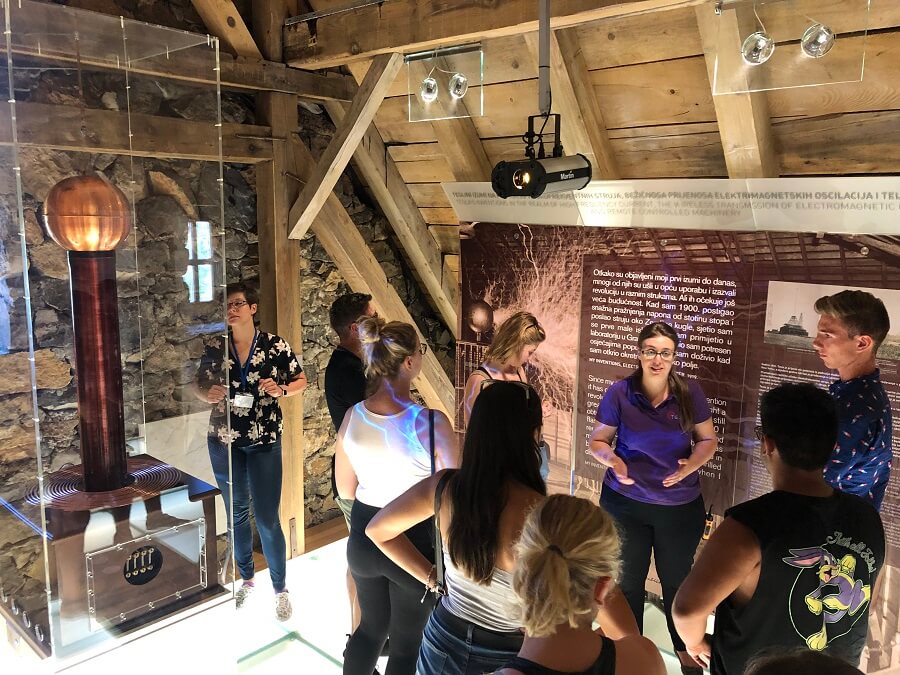
My favourite aspect of the memorial centre in Smiljan was the attic of Nikola’s home where it showcases samples of his inventions. Pressing the buttons puts on a display of the invention, showcasing how it looked through photographs and not modernized for how it’s used today.
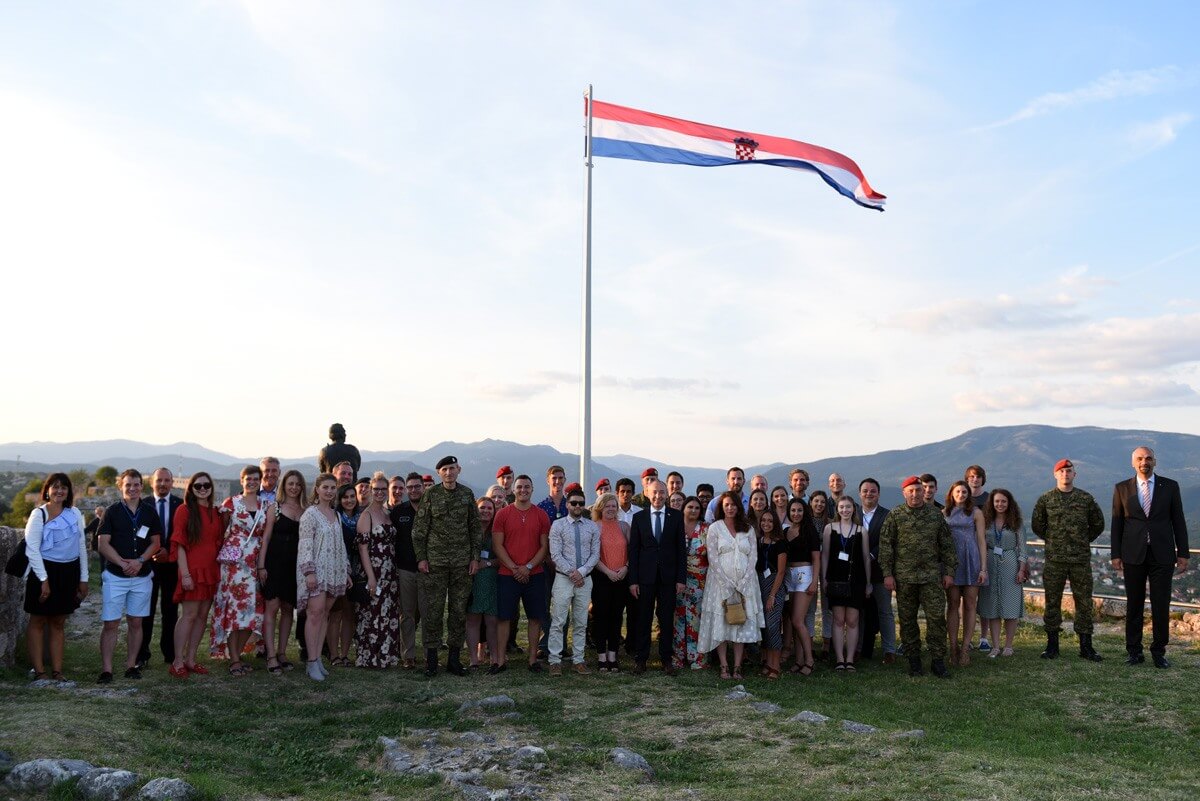
After lunch, we arrived in Knin where we had some free time and time to prepare for a meeting and dinner with the Minister of Defence and Deputy Prime Minister of Croatia. Not only was it amazing to have the opportunity to speak to and dine with this company, but we had the chance to do so in an amazing venue, the Knin Fortress! Catching the sunset at the top of the fortress was absolutely breathtaking with the view!
We were blessed again with an amazing meal. Not only was the food delicious (as per usual!), we were able to enjoy the vocals from Klapa Sveti Juraj! What a great experience!
For a little bit of fun and relaxation, for the next day, a Kornati trip was organized for us on a private boat for the group. I have previously taken a tour for the Kornati National Park with my family but with the trip I had taken before, we didn’t have the opportunity to stop at the memorial crosses. The crosses, found on the island Veliki Kornat, commemorates the Croatian firefighters who lost their lives in the Kornati tragedy on August 30, 2007. On that day over 10 years ago, a group of firefighters were deployed to the island to extinguish a small fire. Unfortunately, for an unknown reason, the fire had taken the lives of the group. Croatia remembers the heroes as a permanent reminder for the dedication of the profession. This is something that almost all of us in the group had no idea of. It has been really riveting to learn about incidents such as this one that I never knew about.
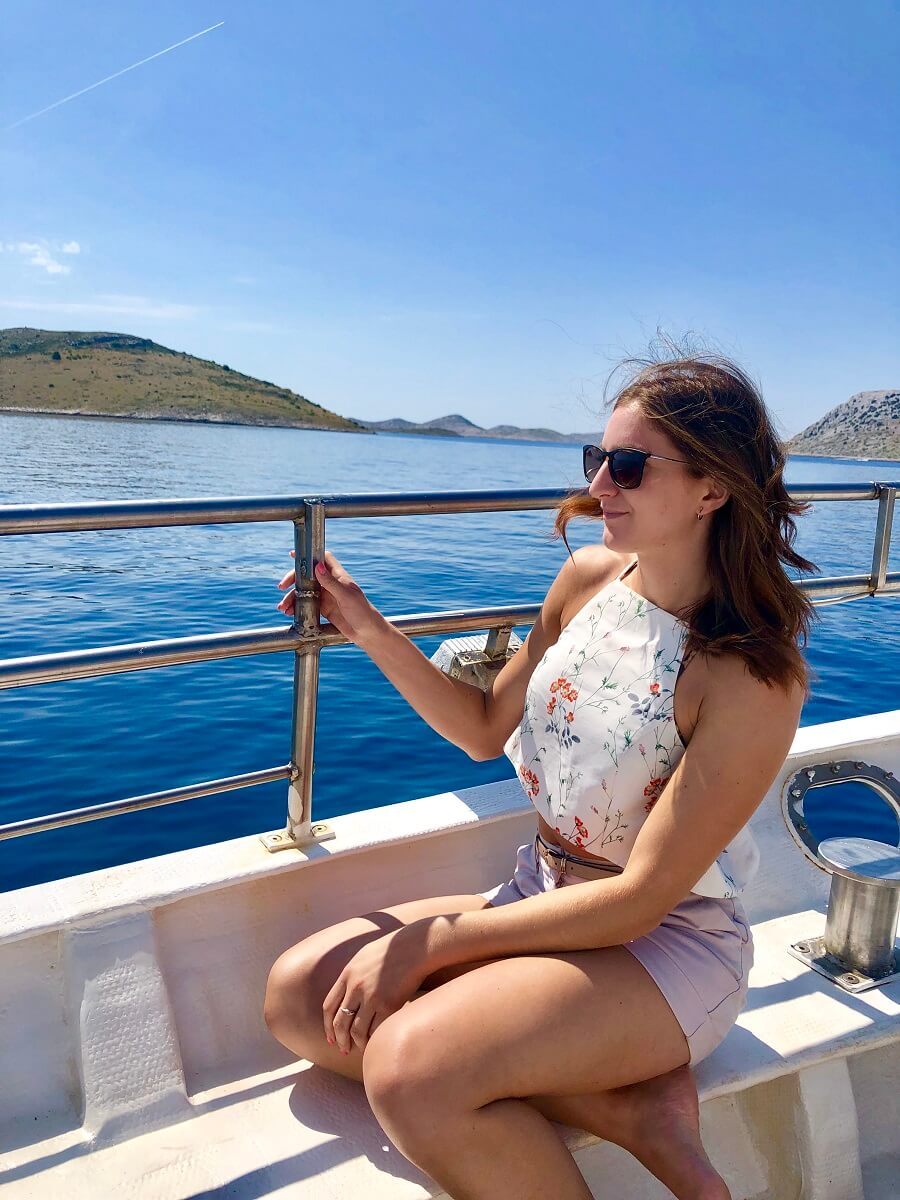
Swimming, beautiful views, good food, singing and dancing soon ended and the party continued to Vrana for the evening to enjoy dinner at Maškovića Han. Located in my dad’s hometown, it made dinner even more special. I remember how the location of the restaurant/hotel looked like before it is what it is today. As a child, we would walk the grounds with my family, and I loved watching all the rabbits jumping around. It is amazing how Croatia as a whole has developed so much throughout my years visiting. Each year, the country becomes more developed, but not in a bad way. It makes my childhood memories even more precious to have had experienced the country in its most simplistic form, which I feel others could relate as well!
Next up: More of the Dalmatia coast!
To follow the latest news from the Croatian diaspora, follow the dedicated TCN section.
Smoke-free Coast: Camp in Murter Swapping Free Drinks for Cigarette Butts
August 4, 2019 - Murter is the latest in the fight to make Croatia's coast free of cigarette pollution.
Earlier this week, TCN reported that the City of Hvar installed biodegradable cardboard ashtrays to reduce the environmental impact of littered cigarette butts on the beaches thanks to a solution by the Volim Vlašići Association from the island of Pag. Recall, the ashtrays are disposable or reusable, made of paper (cardboard), are biodegradable, and have assembly instructions.
Today, we bring you another example of a Croatian town joining the fight against cigarette pollution, reports Dalmacija Danas.
Namely, you might have heard of “Smoke-free coast”, the name of a campaign that delighted locals and tourists in Estepona, a small coastal town in southern Spain. The campaign is straightforward: bring a glass full of cigarette butts to any stall on the beach and in return, enjoy a cold beer or refreshing drink.
The example of Estepona has caught on in Croatia, and the same practice has been adopted by a camp in Murter, who informed locals and tourists in the area via Facebook that they are joining the smoke-free action.
“Following the example of a story from a place in southern Spain where you get a drink in return for a glass full of cigarette butts, we decided to apply the same practice. Camp Slanica, in cooperation with the Lostura beach bar, joins the action - anyone who brings a glass/bottle/bag full of cigarette butts to the beach bar Lostura, gets in return free juice or beer! Since the Murter-Kornati Tourist Board has installed ashtrays on all beaches in Murter at the beginning of summer, you can also freely use cans that serve as ashtrays and fill them with cigarette butts that you find on your favorite beach in Murter. With this action, we all contribute together to a cleaner environment, and at the same time we participate in the prevention of fires, since cigarette butts are a common cause of fires. Hurry up for the action and refresh yourself for the reward - collect, replace, cheers!,” said Camp Slanica on facebook.
NBC News reported that cigarette butts are the single most collected item on the world’s beaches, with more than 60 million collected over 32 years. Not surprisingly, this number amounts to “about one-third of all collected items and more than plastic wrappers, containers, bottle caps, eating utensils and bottles, combined”, NBC said.
Much like plastic, cigarette butts take years to disappear from the environment and the chemicals they are composed of are harmful to everything from plants and wildlife to children.
To read more about lifestyle in Croatia, follow TCN’s dedicated page.


